
By TODD GOTTULA
UNK Communications
KEARNEY – Cutting-edge technology. Increased space. Distinct architecture.
Modern classrooms with better functionality.
The new University of Nebraska Medical Center – University of Nebraska at Kearney Health Science Education Complex has it all, and more.
“If you went into a store and could select everything you need as clinical educators bang, bang, bang – we were able to do that and more for this building,” said Mary Ann Mertz, interim assistant dean for the College of Nursing – Kearney division. “It’s a tremendous modern facility with every tool imaginable for student success.”
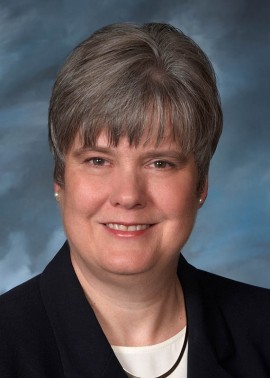
The new $19 million building on the UNK campus will host its grand opening, ribbon cutting and public tours at 11:15 a.m. Aug. 20.
One of the first things visitors will notice is the open design and layout of the building. From large classrooms and wide hallways to spacious commons areas, the 46,000-square-foot complex offers students, faculty and staff a contemporary space.
“The building has a nice, open feel and is a comfortable space that is inviting to everybody using it. It is stimulating to your senses and offers a tremendous learning environment,” said Alan Wedige, UNK campus architect. “When you’re in these spaces, you don’t feel like you’re in a traditional classroom.”
Students will gravitate toward large study areas in the main lobbies on the first and second floors, said Wedige. Those commons areas – among the largest rooms in the building – include informal learning spaces and work areas with comfortable furniture and modern amenities.
Mertz called the Health Science building a “beautiful space” conducive to studying, and relaxing.
“Nursing students are in for an unbelievable experience. They previously had to find an empty classroom, in a rather sterile environment, when they wanted to study, work together or just hang out and talk.
“Now there are large spaces, as well as little nooks and crannies all over the building, that facilitate interdisciplinary growth.”
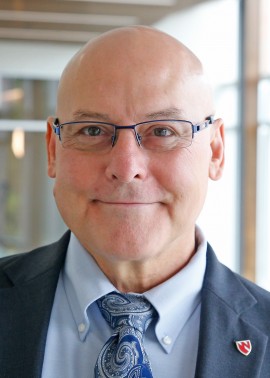
EMPHASIS ON ACTIVE LEARNING
Classroom and lab spaces in the building put an emphasis on active learning.
“The architecture and technology allow instructors to move beyond lecturing at rows of students to facilitating interactive student learning activities that have been shown to produce superior educational outcomes,” said Greg Karst, UNMC College of Allied Health Professions assistant dean for academic and student affairs.
“Today it’s all about collaborative learning. We have a lot of space for students to work together and interact in teamwork situations, which carries over from classrooms to clinical practice.”
Rather than traditional lecture halls, most classrooms include technology-enhanced tables for six where students can work collaboratively in small groups and also use the technology to share their work with the entire class, including students on other campuses.
In addition to seven classrooms, there are laboratories for anatomy, orthopedics, rehabilitation, and patient assessment and skills, as well as an energized radiography suite where students can learn proper x-ray positioning and techniques using state-of-the-art clinical equipment.
Four clinical exam rooms, three high-fidelity simulation rooms, de-briefing areas and a task training room are among additional learning spaces.
Classroom and lab spaces will be shared by College of Nursing and College of Allied Health Professions students. While the College of Nursing has a long history on the UNK campus, the expansion of complete programs of study to Kearney is a new venture for the UNMC College of Allied Health Professions.
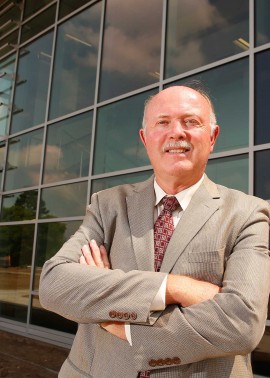
“Nursing students will work alongside physical therapy students, or physician assistants or radiographers,” explained Charlie Bicak, senior vice chancellor for academic and student affairs at UNK. “That’s the innovative nature of this facility and kind of professional environment our students will be in once they leave.
“They will go to towns like Atkinson, Broken Bow and Cozad, and there won’t be 20 nurses and 10 physical therapists beside them. There will be one or two working together. That is one thing that makes this a national model.”
The high-fidelity simulation area is a high-tech space with mannequins programmed to simulate different patient scenarios. It resembles patient rooms in an intensive care unit, complete with nurse’s station and an observation area for faculty with one-way glass.
HIGH-TECH LAB SPACES
Mertz is especially excited about the additional lab space and classroom design, which offers more flexibility for students and faculty. The nursing program’s former classroom, she noted, included 50 chairs and stationary tables facing the front of the room, which made working in groups difficult.
“Nursing is dedicated to active learning, but we had so many limitations,” she said. “The new space encourages group work. Now we have the tools, and physical space, to do what we need to do.”
For allied health students choosing to attend at Kearney rather than on UNMC’s Omaha campus, the experience will be different in terms of the number of classmates in the building, said Karst, but not in terms of the quality of the space and technology available.
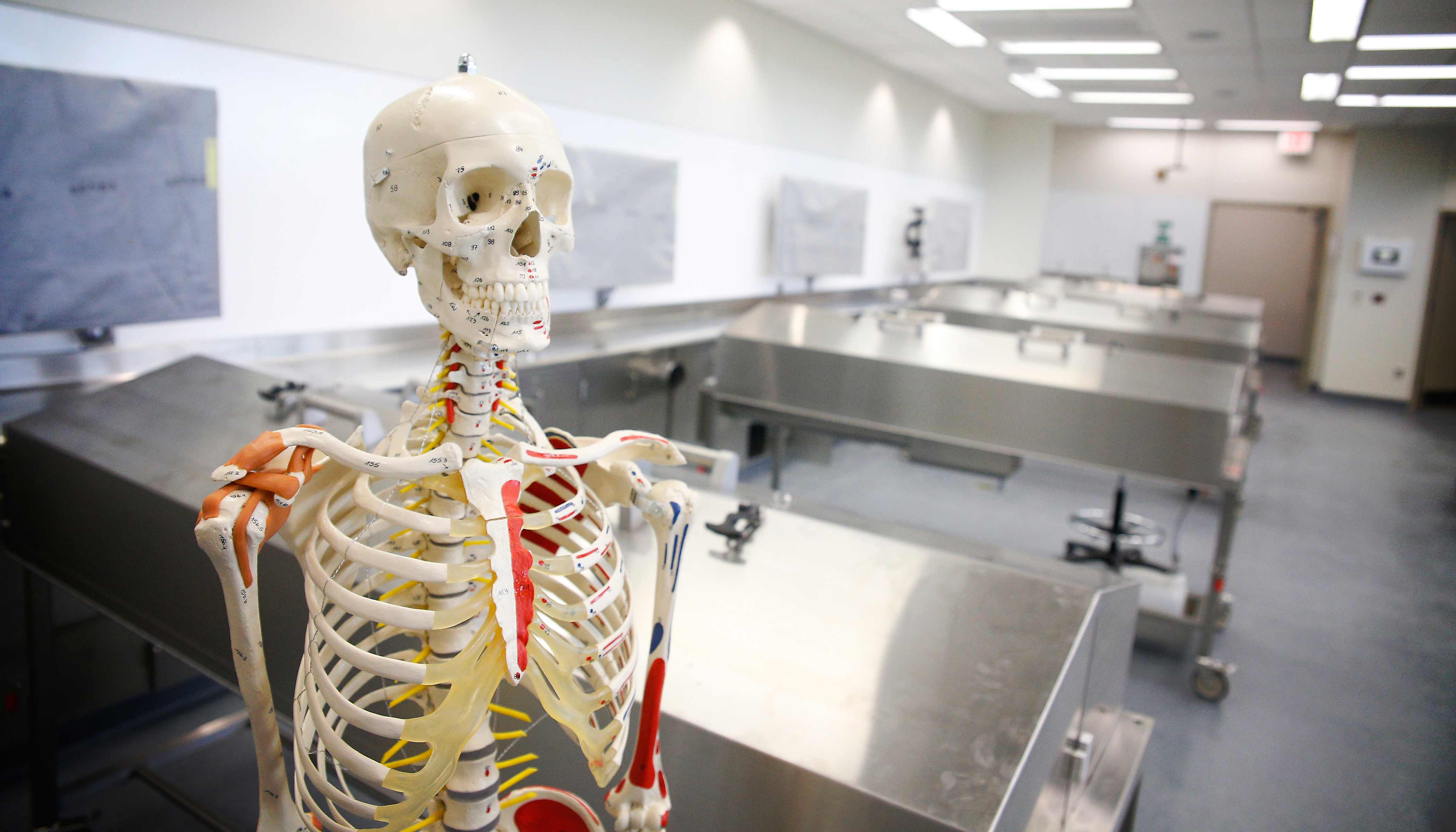
In addition to highly functional space, the Health Science Ed Complex is loaded with high-end lab equipment and other technology. Some of it is today’s standard, such as key cards that limit and monitor access to individual areas of the building.
The radiography lab’s live x-ray unit is the first on any University of Nebraska campus. Another featured piece of equipment is an Anatomage table, a life-size 3D interactive touch screen that allows students to visualize bones, muscles, organs and soft tissue by providing images that can be customized by virtually slicing, layering and segmenting the anatomy.
Perhaps most noticeable are the four projection screens and more than 80 large flat-panel displays – including several 90-inch screens – that line the walls of classrooms and labs throughout the building.
The screens allow for synchronous learning and web conferencing, connecting students and faculty with each other and people across Nebraska and other university campuses. In addition, every classroom, laboratory, clinical skills and simulation area has cameras and microphones to digitally capture learning experiences for later review by students and instructors.
“This building is cutting edge in terms of technological delivery and access for students,” Bicak said.
A 10 gigabit fiber system allows for fast transmission of information through the building’s computer network.
“This project is pushing us to up our game when it comes to technology, not just at UNK, but on all of our University of Nebraska campuses,” Wedige said. “This is truly a joint venture with all of us in the university system working together. We are using our resources to the max, and it improves and increases the ability of each campus to communicate and distribute education across the state.”
BUILDING DESIGN
The building’s architecture is notable, too.
The most visible feature of the building is a two-story glass curtain wall at the main north entrance. Other features include curved wood ceilings, flooring, wall colors and textures that emulate the look and feel of the nearby Platte River, a theme carried throughout the building.
“The architecture fits with our campus. It is consistent and in tune with our identity in terms of size and design,” Bicak said. “It has everything you would expect to see in a modern building, with some very distinct regional characteristics as well.”
Wedige said much thought went into the look and feel of the building.
“We wanted something that looked fresh and new, yet is timeless and fits permanently with the university’s look well into the future,” he said. “When people look at this project they are going to see value, quality, sustainability and say, ‘yeah, this is quite a place.’ It really makes a statement.”
While the building’s design and technological features are exemplary, Mertz said everything was done with student success in mind.
“The idea that students can really be in charge of their own learning is what this project is about. They have every tool they need at their disposal to learn in whatever way works for them,” Mertz said. “You can watch, you can listen and you can touch. Some students learn by sound and listening, others by looking on, and some by touching and doing. It’s all available in this building.”
-30-
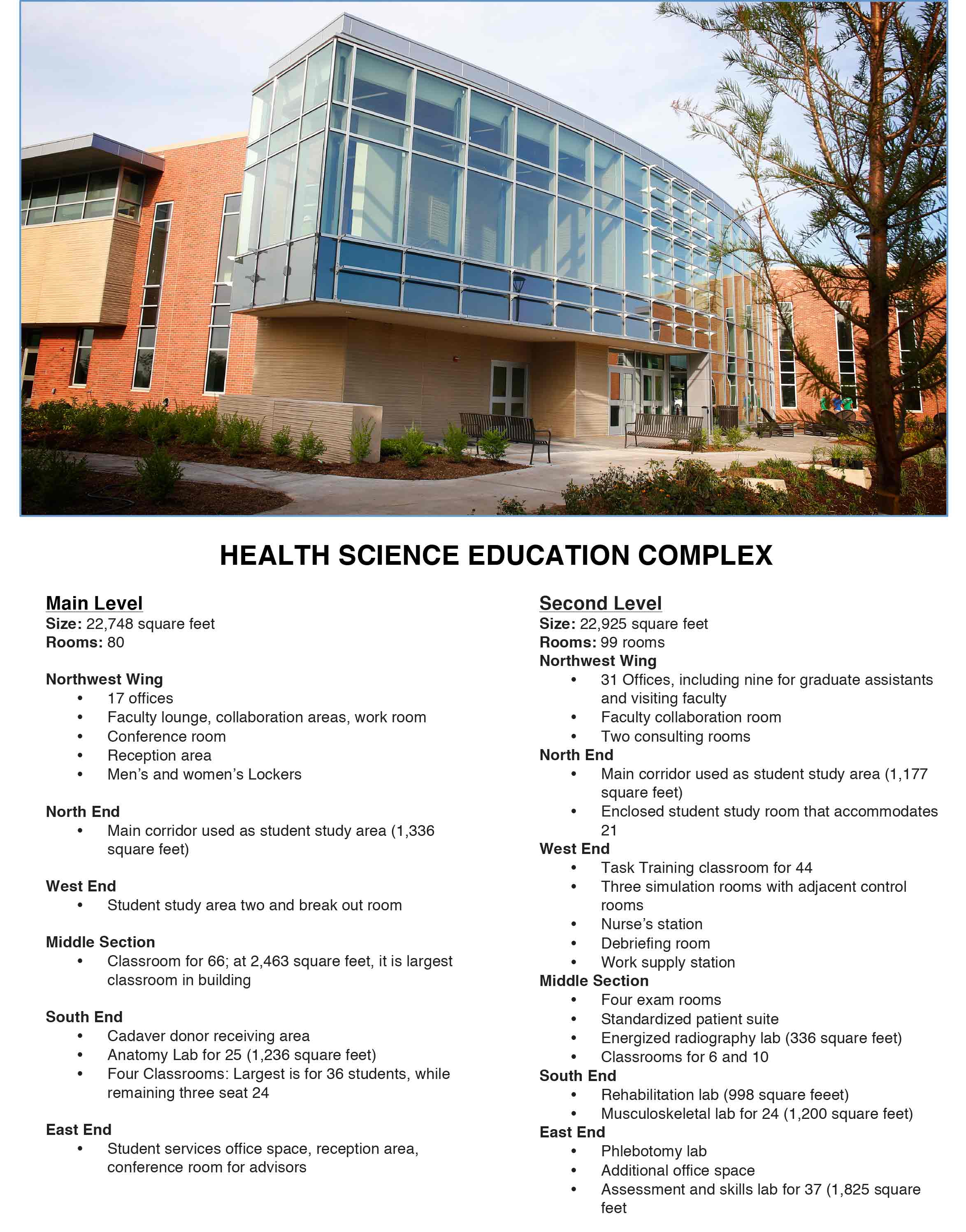
It’s a very good for us and Health Science Ed Complex also. New structure and new technology will helpful for us. Great Job.